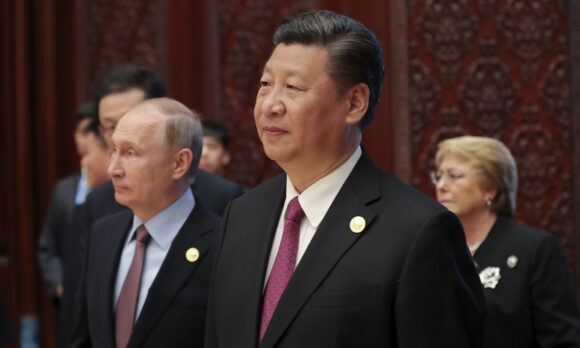Maritime Strategy Project
From July 2014 until April 2015, the CNAS Asia-Pacific Security Program is examining practical ways to impose costs on bad behavior in the East and South China Seas. In recent years, China’s pattern of tailored coercion in its near seas have often sought unilateral changes to the status quo through coercion or force. U.S. policy continues to seek to engage China, bind it to international rules, and balance against China’s rapid military modernization. While this project seeks to build ideas for balancing China, any cost-imposing strategy must be considered within the context of comprehensive U.S.-China relations and regional security.
On this page, you'll find archives of public workshops, blog posts and videos that aim to encourage the establishment of an inclusive, rules-based approach toward order at sea across the Indo-Pacific region.
Publications in this Series
The Challenge of Responding to Maritime Coercion
Dr. Patrick Cronin provides a framework for further thinking about both the need to impose costs on bad behavior and gray zone assertiveness in maritime Asia, and the set of s...
Going Anti-Access at Sea: How Japan Can Turn the Tables on China
Professor Toshi Yoshihara of the U.S. Naval War College examines how Tokyo can, in the context of a consistently defensive approach to security and a strong U.S.-Japan allianc...
Nonmilitary Approaches to Countering Chinese Coercion: A Code of Practice for the Asia-Pacific
Dr. John Lee of the University of Sydney discusses political and diplomatic tools to impose costs on bad behavior in maritime Asia as part of an overall strategy encompassing ...
Cost-Imposing Strategies: A Brief Primer
Dr. Thomas Mahnken, professor at both the Naval War College and Johns Hopkins SAIS, delivers a general but thorough framework for thinking about cost-imposing strategies, a cr...
China's Tailored Coercion and Its Rivals' Actions and Responses: What the Numbers Tell Us
Dr. Christopher Yung and Patrick McNulty provide a groundbreaking data-driven look at how the six claimants of features in the South China Sea have advanced and defended their...
Playing It Safe: Malaysia's Approach to the South China Sea and Implications for the United States
In this sixth paper in the Maritime Strategy Series, Prashanth Parameswaran, Associate Editor at The Diplomat, visiting fellow at the ASEAN Studies Center at American Universi...
Shades of Gray: Technology, Strategic Competition, and Stability in Maritime Asia
Amy Chang, Ben FitzGerald, and Van Jackson unpack how proliferating technologies are intersecting with strategic competition, coercive behaviors, and unclear norms to exacerba...
Indirect Cost Imposition Strategies in the South China Sea: U.S. Leadership and ASEAN Centrality
Dr. Carlyle A. Thayer assesses the implications of China’s assertions of control over the South China Sea for the Association of Southeast Asian Nations (ASEAN) and offers ide...
Preserving the Rules: Countering Coercion in Maritime Asia
"A combination of active engagement, cost imposition, denial, and offset strategies can best help shape the future order of the Asia-Pacific region."...








